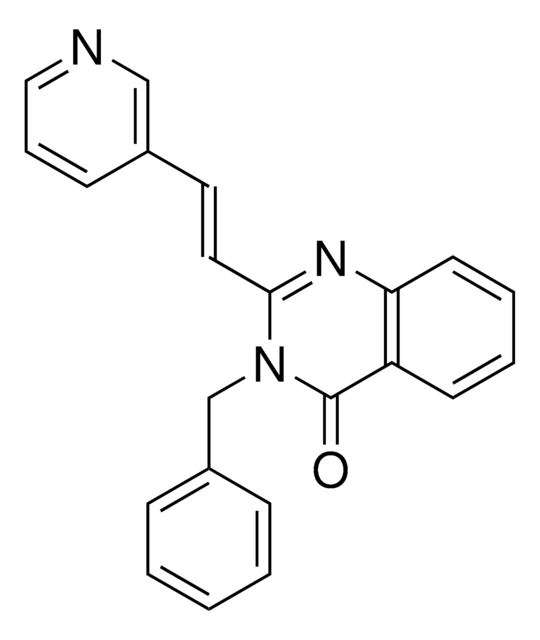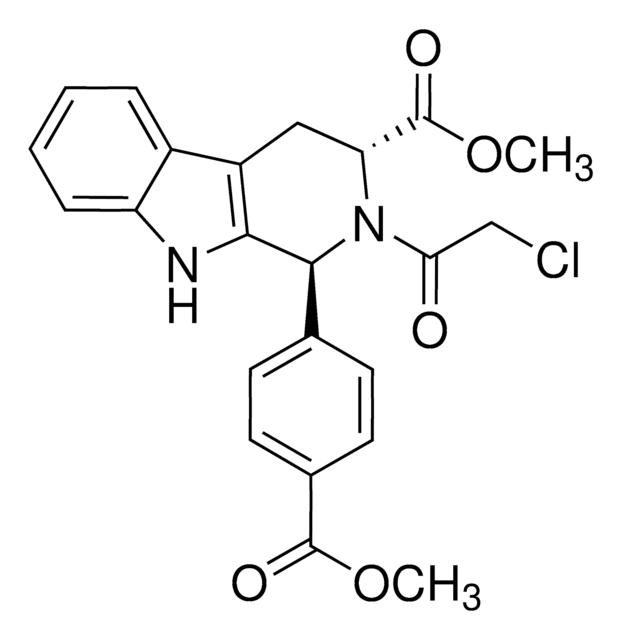SML1154
Clostridium difficile Toxin A
≥95% (SDS-PAGE), lyophilized powder, cellular toxin
Synonim(y):
TcdA
About This Item
Polecane produkty
product name
Clostridium difficile Toxin A, ≥95% (SDS-PAGE)
Poziom jakości
Próba
≥95% (SDS-PAGE)
Postać
lyophilized powder
temp. przechowywania
2-8°C
Szukasz podobnych produktów? Odwiedź Przewodnik dotyczący porównywania produktów
Opis ogólny
Działania biochem./fizjol.
Rekonstytucja
Contents of the 2UG sku when reconstituted in 250 μL sterile distilled water will contain Toxin A at a concentration of approximately 8 μg/mL in 0.05M Hepes, 0.15M sodium chloride and 5% sucrose.
Inne uwagi
Mixing: Swirl or pipette gently to mix. Vortexing may promote aggregation.
Hasło ostrzegawcze
Danger
Zwroty wskazujące rodzaj zagrożenia
Zwroty wskazujące środki ostrożności
Klasyfikacja zagrożeń
Acute Tox. 3 Oral - Acute Tox. 4 Dermal - Acute Tox. 4 Inhalation
Kod klasy składowania
6.1C - Combustible acute toxic Cat.3 / toxic compounds or compounds which causing chronic effects
Klasa zagrożenia wodnego (WGK)
WGK 2
Temperatura zapłonu (°F)
Not applicable
Temperatura zapłonu (°C)
Not applicable
Certyfikaty analizy (CoA)
Poszukaj Certyfikaty analizy (CoA), wpisując numer partii/serii produktów. Numery serii i partii można znaleźć na etykiecie produktu po słowach „seria” lub „partia”.
Masz już ten produkt?
Dokumenty związane z niedawno zakupionymi produktami zostały zamieszczone w Bibliotece dokumentów.
Nasz zespół naukowców ma doświadczenie we wszystkich obszarach badań, w tym w naukach przyrodniczych, materiałoznawstwie, syntezie chemicznej, chromatografii, analityce i wielu innych dziedzinach.
Skontaktuj się z zespołem ds. pomocy technicznej








